Kenya (English spelling) Republic of Kenya

|
A country located directly on the equator in eastern Africa. Its official name is the Republic of Kenya (Jamhuri ya Kenya). It borders Ethiopia and South Sudan to the north, Somalia to the east, Tanzania to the south, Uganda to the west, and faces the Indian Ocean to the southeast. The country's name comes from Mount Kenya (5,199 meters), the second highest mountain in Africa. It has an area of 580,367 square kilometers and a population of 36.43 million (2006 estimate), 38.61 million (2009 census). The capital is Nairobi, with a population of 3.1 million (2009). Many tourists visit the country as a wildlife paradise, but it is also one of the most industrially developed countries in Africa. It is a member of the Commonwealth of Nations. [Ken Akasaka and Kazuki Kusunoki] NatureThe country is often referred to as a museum of topography, as it has a wide variety of topography. The capital, Nairobi, is at an altitude of around 1,700 meters, and the central part of the country is a plateau with an altitude of 1,000 to 3,000 meters. The Great African Rift Valley runs from north to south, and at its bottom are Lake Turkana (Lake Rudolf), Lake Nakuru, and Lake Naivasha. To the west of this lies the Western Highlands, which extend to Lake Victoria. Volcanoes such as Mount Kenya and Mount Elgon (4,321 meters) tower above the plateau. The vegetation is diverse, ranging from the coast of the Indian Ocean to high mountains of 4,000 to 5,000 meters. The northern part of the country receives less than 250 mm of rain per year, and the eastern part close to Somalia receives less than 500 mm, both of which have an arid semi-desert landscape. The lower part of the Great Rift Valley in the west is also dry and has sparse vegetation. The central plateau and western highlands receive around 1,000 mm of rain per year during two rainy seasons, from March to May and from October to December, and are savannahs. There are 59 national parks, national reserves, and wildlife sanctuaries in the country, each boasting a rich fauna. The largest of these, Tsavo National Park, covers an area of 20,782 square kilometers when the eastern and western parks are combined, which is larger than Shikoku. These national parks are home to large animals such as elephants, giraffes, zebras, rhinos, buffalos, and wildebeests, as well as small and large antelopes such as impalas, Thomson's gazelles, and elands, carnivores such as lions, leopards, cheetahs, hyenas, and jackals, hippos, crocodiles, and a wide variety of birds such as flamingos. In 1997 and 2013, Mount Kenya National Park: Natural Forests was registered as a UNESCO World Heritage Site, followed by Lake Turkana National Parks, which combine Sibiloi, Central Island, and South Island, in 1997 and 2001, and the Ecosystem of the Lakes of the Great Rift Valley of Kenya in 2011 (Lake Turkana National Parks was registered on the List of World Heritage in Danger in 2018). Cultural heritage sites include the Old Town of Lamu (2001), the Sacred Kaya Forest of Mijikenda (2008), Jesus Fort of Mombasa (2011), and the Timurika Ohinga Archaeological Site (2018). [Ken Akasaka and Kazuki Kusunoki] historyIn ancient Greece and Rome, the coastal region of East Africa was known as Azania. The Arabs also called the coastal areas of present-day Somalia and Kenya the Land of Zenzi, or "Land of the Black People." At the end of the 10th century, under Arab influence, the Zenzi Kingdom was formed. The Portuguese navigator Vasco da Gama visited the ports of Mombasa and Malindi in 1498 during his journey to discover the sea route to India. At that time, many Arabs from Oman had crossed the sea and established trading posts. Portugal established a base (Fort Jesus) on the east coast and aimed to colonize the region, but was unsuccessful due to the strong resistance of Arab forces in Oman. The Arabs established cities in Lamu, Mombasa, Takaungu, and other places, but their activities were limited to a small area on the coast and they only secured trade routes for ivory and slaves inland. In 1823, Britain first began to advance into the region, and in 1884, Sir William Mackinnon (1823-1893) obtained a trade charter from the Sultan of Zanzibar. He established the British East Africa Association, mainly with the intention of trading with landlocked Uganda. At the time, East Africa was in a fierce battle between the German and British empires over colonial interests. In 1888, the British East Africa Association changed its name to the Imperial British East Africa Company, and came under British protection. In 1895, the British government proclaimed the establishment of the East African Protectorate, and most of the present-day Kenya was incorporated into it. Construction of the Uganda Railway, which ran from Mombasa to Uganda, began immediately, and colonial management got into full swing. Although the construction of the railway was met with resistance from local residents, by mobilizing large numbers of Swahili mercenaries and Indian laborers, a line was laid to Kisumu on the shores of Lake Victoria in 1901. In 1907, the administrative centre of the protectorate was moved from Mombasa to Nairobi. Nairobi, which was just a camping area called "Enkare Neerobi" (cold water) in Maasai until a railway station was established in 1899, rapidly developed into a city. During the same period, the number of European settlers in the land along the Uganda Railway increased. The colonial government designated the "White Highlands", a large plantation area exclusively for whites, and accepted European immigrants, while excluding the African residents there and enclosing them in protected areas. In order to further expand the White Highlands, the Eastern Province of the Uganda Protectorate was incorporated into the East African Protectorate in 1902. In 1920, the East African Protectorate became a direct colony and was named the Colony of Kenya. The colonial government implemented the Kipande System, restricting the movement of Africans and attempting to secure their labor force. Around this time, the African residents began to feel a sense of crisis, and the East African Association (EAA) was formed by the Kikuyu people, whose land had been taken from them. In 1921, they began an anti-colonial movement, demanding the abolition of the Kipande System, a reduction in house and poll taxes, the prevention of wage cuts, and the return of land. After that, nationalistic political movements began to emerge among the major ethnic groups, such as the Kikuyu, Luo, and Luiya. The Kikuyu Central Association (KCA), which was formed in 1924 as the successor to the East African Association, began to be active, led by Secretary-General Jomo Kenyatta. During World War II, political activity by Africans was completely outlawed, but after the war, the Kenya African Union (KAU, founded in 1944) resumed its activities and grew in power, with Kenyatta, who returned from Britain in 1946, as its leader. Around 1950, the colonial government, fearing the expansion of the KAU's power, issued a decree banning an anti-British armed organization called the Mau Mau. However, when some radicals rose up in revolt and began to attack pro-British African chiefs, the colonial government declared a state of emergency in 1952 and began violent crackdown on the KAU. This crackdown was harsh, resulting in more than 10,000 African deaths and more than 300,000 arrests, including political leaders such as Kenyatta, but it also forced a change in British colonial policy. In 1954, the government began to make reforms regarding land and self-governance issues, and in the first elections in 1957, eight African members of parliament were elected. In 1959, the Kenya Independent Movement (KIM), which advocated immediate independence by Africans, was founded with Jaramoji Oginga Odinga (1911-1994) as its leader. In 1960, the Kenyan Constitutional Convention was held in London, and the UK decided to establish a government ruled by an African majority. The Kenya African National Union (KANU) and the Kenya African Democratic Union (KADU) were formed, and KANU came in first in the general election of 1961. Kenyatta was released in August 1961 and became president, a cabinet led by KANU was formed, and on December 12, 1963, Kenya achieved independence as a self-governing country within the Commonwealth of Nations. [Ken Akasaka and Kazuki Kusunoki] PoliticsIn December 1964, one year after independence, Kenya declared itself a republic, and Kenyatta, the founding father, became the first president. All members of the opposing KADU also joined KANU, making it a de facto one-party system, but within KANU, conflict between pro-British and American factions and pro-Soviet and Chinese factions intensified. In 1966, Vice President Odinga, who sided with the latter, resigned and formed the Kenya People's Union (KPU). In the 1969 general election, the KPU secured nine seats with the support of the Luo and Luiya people, despite the central government's intense interference in the election. However, under the Maintenance of Public Order Act that came into force in the same year, KPU executives, including Odinga, were imprisoned. In 1969, the KPU was also outlawed, and Kenya's one-party system was maintained through authoritarian rule. Following Kenyatta's death at the age of 86 in August 1978, Daniel Toroitich Arap Moi (1924-2020), who had been Vice President and was a member of the Tugen ethnic minority group in the Rift Valley region, became the second President in October of the same year. Moi initially pursued a populist (popular or populist) policy that was distinct from Kenyatta's authoritarian patriarchal politics, but dissatisfaction from both the left and right camps grew. In August 1982, left-wing radicals, including Kenya Air Force officers and students from the University of Nairobi, attempted a coup, but Moi, with the support of the army and police, quickly suppressed it. From then on, Moi rapidly established an authoritarian and patriarchal dictatorship, amending the constitution to make the one-party system absolute. In the 1990s, forces opposed to Moi's dictatorship formed the Forum for the Restauration of Democracy (FORD) and began to strongly demand the democratization of politics and society. In response to this, the international community also made increasing calls for the suspension of aid due to human rights violations. As a result, in December 1991, Moi decided to amend the constitution and reintroduce a multi-party system. In the December 1992 presidential election, Moi was helped by a split in the opposition camp and barely won despite receiving 36% of the vote (his fourth term). In the 1997 presidential election, the opposition camp also split, and Moi won (his fifth term. Moi was in office for five terms, 24 years). In the presidential election held at the end of December 2002 after Moi's retirement was decided, the opposition parties finally united to form the National Rainbow Coalition (NARC), an electoral cooperation organization, and Mwai Kibaki (1931-), leader of the Democratic Party (DP), who was recommended as the unified candidate, was elected (DP was formed by Kibaki, who left KANU when the multi-party system was introduced in 1991). This marked the first change of president by election since independence, and the end of the KANU administration. In the 2007 presidential election, the country was divided between the incumbent Kibaki, a candidate of the Party of National Unity (PNU), a multi-party coalition formed by the DP, and Raila Odinga (1945-), a candidate of the opposition Orange Democratic Movement (ODM), and after a close race, Kibaki was re-elected. However, there were some problems, such as the Central Electoral Commission's interruption of the vote count and Odinga's sudden loss of lead, which led to suspicions of election fraud. Amid these suspicions, an unusual presidential inauguration was held late at night after the final results of Kibaki's victory were announced, but at the same time, riots broke out across the country, and Kenya fell into unprecedented chaos. In addition to clashes between supporters of the ruling and opposition parties and between opposition supporters and the police, there were frequent ethnic conflicts due to the unfair distribution of land after independence. The death toll from the series of post-election riots exceeded 1,000 nationwide, and the number of internally displaced persons is said to be more than 600,000. However, thanks to the mediation efforts of the international community, including the African Union (AU), an agreement was reached in February 2008 between the ruling and opposition parties to form a coalition government, with Annan (former UN Secretary-General, in office from 1997 to 2006) as witness, and a coalition government was formed in April of the same year with Kibaki as president and Odinga as prime minister. The coalition government tackled issues such as electoral reform, revision of the constitution, and handling of the post-election riots. In August 2010, a new Kenyan constitution was promulgated, incorporating groundbreaking reforms such as limiting presidential powers, decentralizing powers, and promoting women's advancement in politics, ushering in a new era for Kenya. The head of state is the president, whose term of office is five years. The parliament is unicameral, with 222 members (seats), and each member's term of office is five years. [Ken Akasaka and Kazuki Kusunoki] Economy and IndustryIn the 10 years since independence, the country's real economic growth rate averaged 6.7%, the highest in Black Africa (Sub-Saharan Africa). However, due to factors such as the oil crisis and the subsequent slump in coffee prices, drought, and rapid population growth, the country's economic growth rate has slowed significantly since the late 1970s. Since then, under the structural reforms promoted by the government, the country has achieved steady economic growth, supported by the tourism and construction industries. Economic growth temporarily declined due to the unrest following the 2007 election, drought damage, and the worldwide rise in fuel oil and food prices, but the construction and tourism industries have recovered, and the growth rate in 2010 picked up to 5.6%. The core of the industry is agriculture, with tea, cut flowers, horticultural crops, and coffee as the main products. Traditionally, Kenyan agriculture was made up of both large farms and small farmers (small-scale farming), but after independence, the country tried to develop small farmers through the "Million Acres Plan" and the "Squatter Plan," which divided the vast land of 3 million hectares in the White Highlands among Africans. Agricultural products account for 70% of Kenya's exports, and tea in particular accounted for 23.8% of total exports in 2011, maintaining its position as the number one agricultural export. Following tea are horticultural crops such as cut roses for Europe, the United States, and Japan, which account for 18.7% of total exports. As coffee, the third largest export, accounts for 4.2%, it can be said that tea and cut flowers support the Kenyan economy today. Besides these, the export value of fruits and vegetables to Europe is also increasing, and there is high demand for pyrethrum as a pollution-free insect repellent. Other commercial crops include sisal, cotton, and sugarcane, and corn, cassava, sweet potatoes, and beans are cultivated for self-sufficiency. Livestock farming is also thriving, with 17.47 million cattle, 17.12 million goats, 27.74 million sheep, and 2.97 million camels (2009), and meat products and leather are also exported in large quantities. Kenya also has a developed light industry. In addition to the food, beverage, and tobacco sectors, industries such as auto parts and repairs, chemicals, petroleum, textiles, shoes, and fabrics are thriving. Products produced in the oil refining industrial area in Mombasa are exported to neighboring African countries. Kenya's industry is developing with the entire eastern and central Africa as its market. Tourism accounts for a large proportion of revenue in the service sector, welcoming 1.61 million tourists in 2010. In terms of trade, exports are $4.867 billion a year, while imports are $11.957 billion (2010), resulting in a large import surplus. Most of the imports are industrial machinery, petroleum products, crude oil, and automobiles. The main import partners are China, the United Arab Emirates, and India, with Japan in fifth place. Top export items include tea, horticultural crops, and coffee. The main export partners are Uganda, the United Kingdom, Tanzania, and the Netherlands. The currency is the Kenyan shilling (KES). Kenya, along with Tanzania, Uganda, Rwanda, and Burundi, constitute the East African Community, which promotes regional agreements. [Ken Akasaka and Kazuki Kusunoki] Society and CultureKenyans are made up of more than 40 ethnic groups. The largest ethnic group is the Kikuyu, accounting for 17% of the total population (2009), followed by the Luiya (14%), Kalenjin (13%), Luo (10%), and Kamba (10%). These ethnic groups have competed as political forces. At the time of independence of Kenya, a multi-ethnic society, the first president, Kenyatta, called for the abandonment of ethnic conflicts and national unity with the slogan "Harambee" (let's work together). The second president, Moi, took the next step with the slogan "Nyayo" (let's follow), calling for the cooperation of each ethnic group in the spirit of love, unity, and peace for self-help development. On the other hand, traditional lifestyles unique to each ethnic group's culture still remain strong, and the Maasai and Turkana peoples strongly maintain their pastoral culture that relies on nature. The official language is English, and the national language is Swahili, which is widely spoken in Coast Swahili along the Indian Ocean coast, such as Mombasa, and in Up Country Swahili in the highlands, such as Nairobi, as a common language. In principle, eight-year primary education (from ages 6 to 14) has been free since 2003. There are seven public comprehensive universities, including the University of Nairobi, and 15 single-subject colleges that make up the public comprehensive universities. The public schools include Jomo Kenyatta University of Agriculture and Technology, which opened with assistance from Japan in 1981. There are also 31 private universities. As for religion, many denominations, including independent Christian churches, are actively involved, with 83% of the population being Christian (2009). Muslims make up 11% of the population, and Islam is widespread in the coastal areas and the arid northern regions, but is also prevalent in cities such as Nairobi. [Ken Akasaka and Kazuki Kusunoki] Relations with JapanJapan and Kenya maintain a good relationship, and many Japanese tourists visit the country. Japan recognized Kenya as a nation when Kenya gained independence in 1963, and established its embassy in Kenya the following year in 1964. In 1979, Kenya opened its embassy in Japan. In 2010, exports from Kenya to Japan totaled $26 million. The main export items are roses, tea, and coffee. Imports from Japan in 2010 totaled $735 million, with the main import items being automobiles, steel, and electrical products. There are 649 Japanese people living in Kenya, including Nairobi (2011), and there is also a Japanese school. There are also 549 Kenyans residing in Japan (2009). Japan is also one of Kenya's major cooperation and economic aid partners. Official Development Assistance (ODA) to Kenya began in 1963 with the acceptance of Kenyan trainees, followed by Japanese experts in 1964 and Japan Overseas Cooperation Volunteers in 1966. Japan's economic cooperation ODA in 2009 was approximately $33.66 million, bringing the cumulative total of ODA up to that year to $2,290.68 billion. By 2009, Japan had dispatched more than 3,500 technical experts and Japan Overseas Cooperation Volunteers to Kenya, and had accepted a total of 6,647 researchers from Kenya. One person with deep ties to Japan is Wangari Maathai, who became the first African woman to receive the Nobel Peace Prize in 2004. When she visited Japan in 2005, she was inspired by the Japanese word "mottainai," and spread the word around the world as a practical principle for environmental protection and peace movements. [Ken Akasaka and Kazuki Kusunoki] "Modern World History 14: Modern African History 2: East Africa" by Yoshida Masao (2000, Yamakawa Publishing)" ▽ "Modern African Conflicts: History and Subjects" edited by Takeuchi Shinichi (2000, Institute of Developing Economies, Japan External Trade Organization)" ▽ "ARC Report: Kenya 2010/2011 Edition" (2010), edited and published by the ARC Country Situation Research Group" ▽ "55 Chapters to Understand Kenya" edited by Matsuda Soji and Tsuda Miwa (2012, Akashi Shoten)" ▽ "New African History" edited by Miyamoto Masaoki and Matsuda Soji (Kodansha) [References] | | | | | | | | | | | | | | | [Additional resources] |"> Kenya flag ©Shogakukan Illustration/Shogakukan Creative "> Kenya location map Source: Shogakukan Encyclopedia Nipponica About Encyclopedia Nipponica Information | Legend |
|
アフリカ東部の赤道直下にある国。正称はケニア共和国Jamhuri ya Kenya。北はエチオピアと南スーダン、東はソマリア、南はタンザニア、西はウガンダと接し、南東はインド洋に面する。国名はアフリカ大陸第二の高峰ケニア山(5199メートル)にちなむ。面積58万0367平方キロメートル、人口3643万(2006年推計)、3861万(2009年センサス)。首都はナイロビで人口は310万(2009)。野生動物の楽園として多数の観光客が訪れるが、アフリカでもっとも産業の発達した国の一つでもある。イギリス連邦加盟国。 [赤阪 賢・楠 和樹] 自然しばしば地形の博物館とも例えられるように多彩な地形がみられる。首都ナイロビの標高は1700メートル前後あり、国の中央部は標高1000~3000メートルの高原からなる。北から南にアフリカ大地溝帯が走り、その底部にトゥルカナ湖(ルドルフ湖)、ナクル湖、ナイバシャ湖などが並ぶ。その西に西部高地が広がり、ビクトリア湖へと続く。高原上にはケニア山、エルゴン山(4321メートル)などの火山がそびえる。 インド洋沿岸から、4000~5000メートルの高山まで植生も多彩である。北部は年降水量が250ミリメートル以下であり、ソマリアに近い東部も500ミリメートル以下で、ともに乾燥しきった半砂漠の景観を示している。西部のアフリカ大地溝帯の低部も乾燥し、希薄な植生となっている。中央高原と西部高地は、3~5月および10~12月の年2回の雨期に1000ミリメートル前後の降水量があり、サバンナとなっている。国内には国立公園、国立保護区、野生生物保護区が59か所もあり、それぞれ豊富な動物相を誇っている。なかでも最大の規模のツァボ国立公園は、東西の2公園をあわせると、四国よりも広い2万0782平方キロメートルの面積をもつ。これらの国立公園に生息するのは、ゾウ、キリン、シマウマ、サイ、バッファロー、ヌー(ウシカモシカ)などの大形動物のほか、インパラ、トムソンガゼル、イランド(エランド)など小形から大形のレイヨウ類、ライオン、ヒョウ、チーター、ハイエナ、ジャッカルなどの肉食動物、カバ、ワニなどがおり、さらにフラミンゴなど鳥類も多様である。1997、2013年には「ケニア山国立公園:自然林」、1997、2001年にはシビロイ、中央島、南島をあわせた「トゥルカナ湖国立公園群」が、2011年には「ケニアグレート・リフト・バレー(大地溝帯)の湖群の生態系」がユネスコ世界遺産の自然遺産に登録された(「トゥルカナ湖国立公園群」は2018年に危機遺産リストに登録)。文化遺産としては「ラム旧市街」(2001)、「ミジケンダの聖なるカヤの森林」(2008)、「モンバサのジーザス要塞(ようさい)」(2011)、「ティムリカ・オヒンガ考古遺跡」(2018)が登録されている。 [赤阪 賢・楠 和樹] 歴史古代ギリシア・ローマ時代、東アフリカの海岸地方はアザニアとして知られていた。また、アラブ人は今日のソマリアとケニアの海岸一帯を、ゼンジの地すなわち「黒い人々の土地」とよんでいた。10世紀末にはアラブ人の影響を受けてゼンジ王国が形成された。ポルトガルの航海者バスコ・ダ・ガマは、インド航路発見の旅の途中、1498年にモンバサやマリンディの港を訪問したが、当時はオマーンから多数のアラブ人が海を渡り交易基地を建設していた。ポルトガルは東海岸に根拠地(フォート・ジーザス)を築き、この地域の植民地化をねらったが、オマーンのアラブ勢力の強固な抵抗にあい不成功に終わった。アラブ人はラム、モンバサ、タカウングなどに都市を建設したが、その活動は海岸部の狭い地域に限られ、内陸には象牙(ぞうげ)や奴隷の交易ルートを確保するにとどまった。 1823年、イギリスが初めてこの地に進出を開始したが、1884年にマッキノンSir William Mackinnon(1823―1893)がザンジバルのスルタンから貿易特許を取得した。彼は、おもに内陸のウガンダとの取引をもくろみ、イギリス東アフリカ協会British East Africa Associationを設立した。当時、東アフリカではドイツ、イギリス両帝国が植民地争奪をめぐって激しく対立していた。1888年、イギリス東アフリカ協会は帝国イギリス東アフリカ会社Imperial British East Africa Companyに名称を変更し、イギリスの保護下に入った。1895年にはイギリス政府によって東アフリカ保護領の設立が宣言され、現在のケニアの国土の大半がそこに組み込まれた。ただちに、モンバサからウガンダへと通じるウガンダ鉄道の建設が開始され、植民地経営が本格化した。鉄道建設は住民の抵抗を受けたものの、多数のスワヒリ人傭兵(ようへい)とインド人労働者を動員することによって、1901年にはビクトリア湖岸のキスムまでの線路が敷設された。 1907年、保護領の行政中心地はモンバサからナイロビに移転された。1899年に鉄道の駅が設置されるまで、マサイ語で「冷たい水Enkare Neerobi」とよばれるキャンプ地にすぎなかったナイロビは、以後急速に都市として発展していった。同じ時期、ウガンダ鉄道沿いの土地へのヨーロッパ人移住者の数が増加した。植民地政府は「ホワイト・ハイランド」という白人専用の大プランテーション地域を指定し、ヨーロッパからの移民を受け入れるとともに、そこに居住していたアフリカ人を排除し保護地区を設けて囲い込んだ。さらにホワイト・ハイランドを拡大するために、1902年にはウガンダ保護領東部州が東アフリカ保護領に組み込まれた。 1920年、東アフリカ保護領は直轄植民地となり、ケニア植民地と命名された。植民地政府は先住民登録条令(キパンデ制度)を施行し、アフリカ人の移動を制限するとともに、その労働力を確保することを試みた。このころになるとアフリカ人住民の危機意識も高まってきて、土地を奪われたキクユ人によって東アフリカ協会(EAA:East African Association)が結成された。1921年には、キパンデ制度の撤回、家屋税、人頭税の引下げ、賃金切下げの阻止、土地返還などを要求し、反植民地運動を開始した。その後、キクユ人、ルオ人、ルイヤ人などの大民族集団の間に、ナショナリズム的な政治運動が芽生えた。1924年に東アフリカ協会の後身として結成されたキクユ中央協会(KCA:Kikuyu Central Association)は、書記長ジョモ・ケニヤッタを中心として活発な活動を開始した。 第二次世界大戦中、アフリカ人の政治活動は全面的に非合法化されたが、戦後の1946年にイギリスから帰国したケニヤッタを党首に迎えたケニア・アフリカ人同盟(KAU:Kenya African Union。1944年結成)は活動を再開し、党勢を伸長させた。1950年ごろ、KAUの勢力拡大を恐れた植民地政府は、マウマウ団と称する反英武装結社の禁止を布告した。しかし、急進派の一部が蜂起(ほうき)し、親イギリス派のアフリカ人首長を襲撃しはじめると、植民地政府は1952年、非常事態を宣言してKAUに対する武力弾圧を開始した。この弾圧は、アフリカ人の死者1万人以上、ケニヤッタなど政治指導者を含めて逮捕者30万人以上を出す過酷なものであったが、同時にイギリスの植民地政策に転換を強いることにもなった。1954年、政府は土地問題と自治問題に関する変革に着手し、1957年の初めての選挙では、8名のアフリカ人議員が選出された。1959年、アフリカ人による即時独立を主張するケニア独立運動(KIM:Kenya Independent Movement)がオギンガ・オディンガJaramoji Oginga Odinga(1911―1994)を党首として結成された。1960年にはロンドンでケニア憲法会議が開催され、イギリスはアフリカ人の多数支配による政府樹立に踏み切った。ケニア・アフリカ人全国同盟(KANU:Kenya African National Union)やケニア・アフリカ人民主主義同盟(KADU:Kenya African Democratic Union)が結成され、1961年の総選挙ではKANUが第一党を占めた。1961年8月に釈放されたケニヤッタが総裁に就任、KANUによる内閣が組閣され、1963年12月12日にイギリス連邦内の自治国として独立を達成した。 [赤阪 賢・楠 和樹] 政治独立1年後の1964年12月、ケニアは共和制を宣言、建国の父ケニヤッタが初代大統領に就任した。対立していたKADUも全員がKANUに入党し、実質的な一党制となったが、KANU内部で親英米派と親ソ連中国派との対立が激化した。1966年、後者の側についていた副大統領のオディンガが辞職し、ケニア人民連合(KPU:Kenya People's Union)を結成した。1969年の総選挙で、KPUは中央政府の激しい選挙干渉にもかかわらずルオ人やルイヤ人の支持を得て9議席を確保した。しかし、同年に施行された公共治安維持法により、オディンガを含むKPU幹部は投獄された。1969年にはKPUも非合法化され、強権政治によりケニアの一党制が維持された。1978年8月にケニヤッタが86歳の高齢で死去すると、同年10月、リフト・バレー地方の少数民族トゥゲン出身で副大統領であったダニエル・アラップ・モイDaniel Toroitich Arap Moi(1924―2020)が第2代大統領に就任した。 モイは当初、ケニヤッタの強権的家父長的政治と一線を画したポピュリズム的(大衆重視あるいは大衆迎合的)政治を進めたが、左右両陣営からの不満が増大していった。1982年8月、ケニア空軍将校とナイロビ大学の学生など左翼陣営の急進派がクーデターを起こそうとしたが、陸軍や警察の支持を得たモイによって短期間で鎮圧された。以降、モイは憲法を改正して一党制を絶対化するなど、急速に強権的で家父長的な独裁政治体制を整えていった。モイの独裁政治に反対する勢力は、1990年代に入ると民主主義回復フォーラム(FORD:Forum for the Restauration of Democracy)を結成して政治と社会の民主化を強く要求しはじめた。これと呼応して国際社会からも人権抑圧を理由にした援助停止の要請が高まった。その結果、1991年12月にモイは憲法を改正し、複数政党制をふたたび導入することを決定した。1992年12月の大統領選挙では野党陣営の分裂に助けられ、モイが36%の得票率にもかかわらずかろうじて当選した(4選目)。その後、1997年に行われた大統領選挙においても野党陣営が分裂し、モイが当選した(5選目。モイは5選、24年間大統領職についた)。 モイの引退が決まった後の2002年12月末に実施された大統領選挙では、ついに野党が大同団結して選挙協力組織である全国虹(にじ)の連合(NARC:National Rainbow Coalition)を結成し、その統一候補に推された民主党(DP:Democratic Party)党首のムワイ・キバキMwai Kibaki(1931― )が当選した(DPは1991年の複数政党制導入に伴いKANUから離党したキバキが結成)。それにより、独立以降初めての選挙による大統領の交代が実現し、KANU政権が終焉(しゅうえん)することになった。 2007年の大統領選挙では、DPと複数政党で結成した国民統一党(PNU:Party of National Unity)候補で現職のキバキと、野党オレンジ民主運動(ODM:Orange Democratic Movement)から出馬したライラ・オディンガRaila Amolo Odinga(1945― )が全国を二分して争い、接戦の結果キバキが再選を果たした。しかしながら、中央選挙管理委員会の開票速報の中断やリードしていたオディンガが突然逆転されたりするなどのトラブルがあり、不正選挙の疑惑が生じた。その疑惑のさなか、キバキ勝利の最終結果報告を受けて深夜に異例の大統領就任式が強行されたが、それと同時に全国規模の暴動が発生し、ケニアは未曽有(みぞう)の混乱に陥った。与野党支持者の衝突や野党支持者と警察との衝突のほか、独立後の土地の不公平配分などに起因する民族間紛争が頻発した。 一連の選挙後暴動の死者は、全国で1000人を超え、国内避難民の数は60万人以上とされる。しかしアフリカ連合(AU:African Union)をはじめとする国際社会の調停努力により、アナン(前国連事務総長。在任1997~2006)を立会人として、2008年2月に与野党の間で連立政権発足に関する合意が成立し、同年4月にキバキを大統領、オディンガを首相とする連立政権が発足した。連立政権は選挙制度改革、憲法の見直し、選挙後暴動の処理などの課題に取り組んだ。2010年8月には大統領権限の制限、地方分権、女性の政治進出などの画期的改革を盛り込んだケニアの新憲法が発布され、ケニアは新しい時代を迎えることになった。 元首は大統領で任期は5年。議会は一院制で議員数(議席数)は222、議員の任期は5年である。 [赤阪 賢・楠 和樹] 経済・産業独立後10年間の経済成長率は実質で平均6.7%に達し、ブラック・アフリカ(サハラ砂漠以南のアフリカ地域)では最高であった。しかし石油危機やその後のコーヒー価格の低迷、干ばつ、人口の急増などの要因が影響して、1970年代後半以後、経済成長率は大幅に鈍化した。その後、政府が推進する構造改革のもと、観光業や建設業に支えられて、着実な経済成長を遂げてきた。2007年の選挙後の混乱、干ばつ被害、世界的な燃油(燃料油)や食料価格の高騰などにより、経済成長は一時後退したが、建設業や観光業が回復し、2010年の成長率は5.6%と持ち直している。 産業の中心は、紅茶、切り花、園芸作物、コーヒーを主要な産物とする農業である。ケニアの農業は、従来大農場と小農(小規模農業)の両者で成り立っていたが、独立以後ホワイト・ハイランドの300万ヘクタールもの広大な土地を、アフリカ人に分割する「100万エーカー計画」や「スクオッター計画」で、小農の育成に努めた。農産物はケニアの輸出の70%を占めるが、なかでも紅茶は2011年の全輸出額の23.8%を占め、農産物の輸出第1位の座を守っている。紅茶に続くのはバラの切り花など欧米、日本向けの園芸作物で、その割合は全輸出額の18.7%にも達している。輸出額第3位のコーヒーが占める割合が4.2%であることから、紅茶と切り花が今日のケニアの経済を支えているといえる。これら以外にも、ヨーロッパ向けの果物や野菜の輸出額も増大しつつあり、無公害の防虫剤としてジョチュウギク(除虫菊)の需要も高い。そのほか、サイザル麻、ワタ、サトウキビなどの商品作物、トウモロコシ、キャッサバ、サツマイモ、マメ類などが自給作物として栽培されている。牧畜も盛んで、ウシ1747万頭、ヤギ1712万頭、ヒツジ2774万頭、ラクダ297万頭(2009)が飼育されており、肉製品、皮革類の輸出も多い。 ケニアは軽工業も発達している。食料、飲料、タバコ部門のほか、自動車部品・修理、化学、石油、繊維、靴、布などの工業が盛んである。モンバサに立地する石油精製工業地帯で生産された製品は近隣アフリカ諸国に輸出されている。ケニアの工業は、アフリカ東部、中央部全体をマーケットとして発達している。 サービス部門では観光収入の比重が高く、2010年には161万人の観光客を迎えている。 貿易は、輸出が年間48億6700万ドル、輸入が119億5700万ドル(2010)で、大幅な輸入超過となっている。輸入品目では、産業用機械、石油製品、原油、自動車などが大半を占めている。おもな輸入相手国は中国、アラブ首長国連邦、インドで、日本は第5位である。輸出品目としては紅茶、園芸作物、コーヒーなどが上位を占めている。おもな輸出相手国はウガンダ、イギリス、タンザニア、オランダである。通貨はケニア・シリング(KES)。ケニアはタンザニア、ウガンダ、ルワンダ、ブルンジとともに域内協定を推進する東アフリカ共同体を構成している。 [赤阪 賢・楠 和樹] 社会・文化ケニア国民は40以上の民族集団によって構成されている。もっとも人口が大きいのがキクユ人で、全人口の17%(2009)を占めている。以下、ルイヤ人(14%)、カレンジン人(13%)、ルオ人(10%)、カンバ人(10%)が続いている。これらの民族は政治勢力として競い合ってきた。多民族社会であるケニアの独立に際して、初代大統領ケニヤッタは「ハランベー」(力をあわせて働こう)というスローガンによって、民族対立を捨て国民的統合を求めた。2代目大統領のモイは、「ニャヨ」(あとに続こう)のスローガンで次のステップを踏み出し、自助による発展のため、愛、統一、平和の精神で各民族の共働を呼びかけた。一方、民族のそれぞれの文化に固有な伝統的生活様式もなお強く残っており、マサイ人やトゥルカナ人は自然に依存した牧畜文化を強く保持している。 公用語は英語で、スワヒリ語が国語となっている。スワヒリ語はモンバサなどのインド洋岸のコースト・スワヒリと、ナイロビなどの高原地域のアップ・カントリー・スワヒリとが、それぞれ共通語として普及している。 8年制(6~14歳)の初等教育は2003年から原則として無償化されている。大学は、ナイロビ大学などの公立総合大学が7校、公立総合大学を構成する単科大学が15校ある。公立校のなかには、1981年に日本の援助によって開校したジョモ・ケニヤッタ農工大学が含まれる。そのほかにも、私立大学が31校ある。 宗教は、キリスト教の独立教会など多くの宗派が活発に活動しており、人口の83%(2009)がキリスト教徒である。イスラム教徒は人口の11%で、イスラム教は海岸地域や北部の乾燥地域に普及しているが、ナイロビなどの都市でも多い。 [赤阪 賢・楠 和樹] 日本との関係日本とケニアは良好な関係を保っており、日本人旅行者も多い。1963年(昭和38)のケニア独立と同時に日本は国家承認し、翌1964年に駐ケニア大使館を設置した。1979年にはケニアが駐日ケニア大使館を開設している。2010年(平成22)のケニアから日本への輸出額は2600万ドルであった。おもな輸出品目はバラ、紅茶、コーヒーなどである。また、2010年の日本からの輸入額は7億3500万ドルで、おもな輸入品目は自動車、鉄鋼、電気製品などである。ナイロビなどケニアに在住の日本人は649人(2011)に及び、日本人学校もある。また、日本には549人のケニア人が在留している(2009)。 日本は、ケニアにとって主要な協力・経済援助のパートナーの一つでもある。ケニアに対する政府開発援助(ODA)は1963年のケニア人研修生受入れに始まり、1964年には日本人専門家が、1966年には青年海外協力隊員がケニアに派遣されている。2009年の日本からの経済協力ODAは約3366万ドルで、同年までのODAの累計額は22億9068億ドルに達している。2009年までに、日本は3500人以上の技術専門家や青年海外協力隊をケニアに派遣し、ケニアから受け入れた研究員の累計者数は6647人にのぼる。 日本とかかわりの深い人物としては、2004年にアフリカ人女性として初めてノーベル平和賞を受賞したワンガリ・マータイがあげられる。彼女は2005年に来日した際に日本語の「もったいない」ということばを知って感銘を受け、環境保護や平和運動の実践理念としてこのことばを世界中に広めた。 [赤阪 賢・楠 和樹] 『吉田昌夫著『世界現代史14アフリカ現代史2 東アフリカ』(2000・山川出版社)』▽『武内進一編『現代アフリカの紛争――歴史と主体』(2000・日本貿易振興会アジア経済研究所)』▽『ARC国別情勢研究会編・刊『ARCレポート ケニア2010/2011年版』(2010)』▽『松田素二・津田みわ編『ケニアを知るための55章』(2012・明石書店)』▽『宮本正興・松田素二編『新書アフリカ史』(講談社)』 [参照項目] | | | | | | | | | | | | | | | [補完資料] |"> ケニアの国旗 ©Shogakukan 作図/小学館クリエイティブ"> ケニア位置図 出典 小学館 日本大百科全書(ニッポニカ)日本大百科全書(ニッポニカ)について 情報 | 凡例 |
Recommend
Gymnasium - Gymnasium
...Premodern schools, with the exception of unive...
Iga [town] - Iga
Iga is an old town in Ayama District, located in t...
Walt Disney Productions
…The official name is Walt Disney World. It is ru...
Rubbing
...There are two methods for this. One is to plac...
Absenteeism
Absenteeism refers to the situation in which worke...
Cocktail lighting - Kakuteru Shoumei
...Color rendering is the characteristic of a lig...
《Old Father Eterno》 - Oiterueru no Shinpu
…After graduating from the University of Coimbra,...
Livingstone Falls - Chutes de Livingstone
A collective name for 32 waterfalls on the lower ...
Harumi Shibukawa
Year of death: 6th October 1715 (1st November 1715...
Isobe Toshi
1917-1998 Composer and conductor from the late Sh...
Radziwiłłowie (English spelling) Radziwillowie
...The Grand Duchy, which was established under t...
Storyville
…The quadroon bowl was a place where gentlemen su...
Norimasa Uesugi
Year of death: Tensho 7 (1579) Year of birth: 1523...
Alytes cisternasii (English spelling) Alytescisternasii
… [Takahiro Matsui]. … *Some of the terminology t...
Marquis of Caraba
…This is a folk tale retold by the French author ...
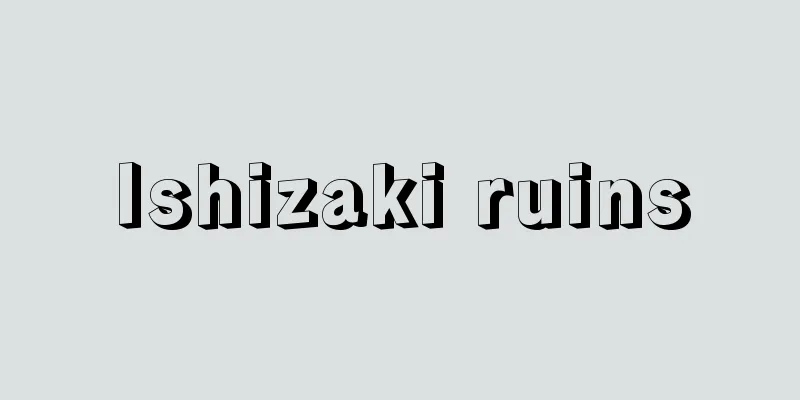
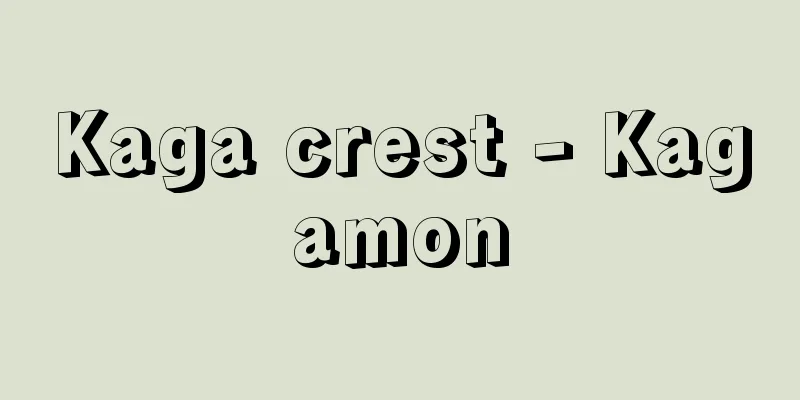

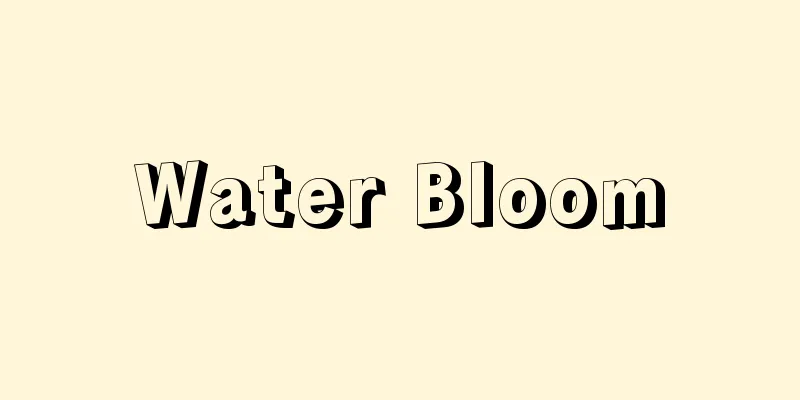
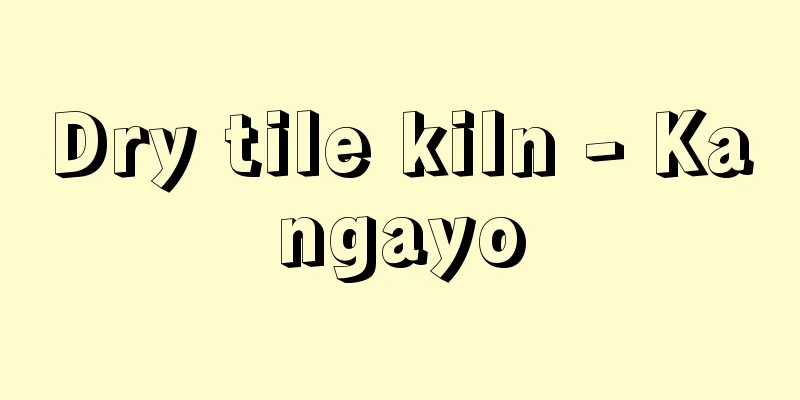
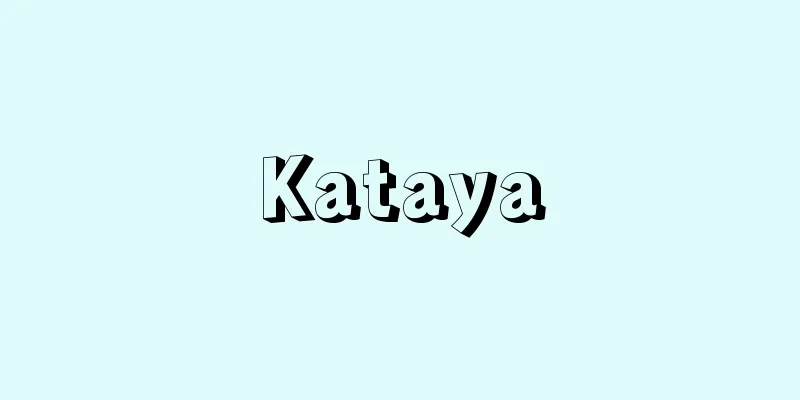


![Togouchi [town] - Togouchi](/upload/images/67cc56813a402.webp)
